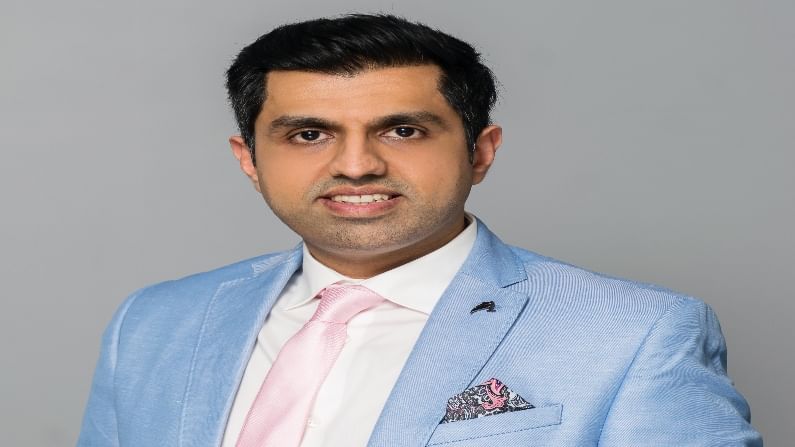INTERVIEW | Invest partially now, and more on dips: Keval Bhanushali
Keval Bhanushali, CEO of Marwadi Shares & Finance, shares investment insights
- Harsh Chauhan
- Last Updated : March 4, 2021, 15:22 IST

How should investors approach investing in current times? Should they adopt aggressive strategies?
In a wide-ranging interview with Money9, Keval Bhanushali, CEO of Marwadi Shares & Finance, shares investment insights.
Edited excerpts:
Q: Many believe that the current setup of the Indian economy is very similar to that of one in the early 2000s. Should investors enter at these price points as many have missed the bus? If yes, which sectors should they get into?
Bhanushali: At the broader level, the market movement currently does look like the early 2000s in terms of a broad-based rally across all-cap stocks. Unlike the 2014 & 2017 where the rally was led mostly by large-cap. But the current rally is more driven by the absolute value of goods whereas the 2004 rally was led by a huge consumption upsurge. It is extremely important to understand that from 2004 to 2008 the highest PE multiple for Nifty50 was at 26 in Dec2007, whereas currently, we are at 40. So, in a nutshell, no 2004-2007 isn’t coming back. The good part though is that the price to book for Nifty50 is around 4x which is still lesser than 2004-07 highs where it had gone over 6x in Dec2007. Investors who have missed this rally can look at partial deployment at these levels and wait for the smaller dips to deploy more funds over the year. A sectoral approach is a must in the current market. Insurance, asset management, retail consumer goods sectors & allied healthcare services should be considered for the next phase of the bull run.
Q: GST collections have surpassed the Rs 1 lakh crore-mark for the fifth consecutive month, touching Rs 1.13 lakh crore for February. Do you foresee this trend to continue?
Bhanushali: I do not see this number falling, as the number is driven by two factors, one is the increasing number of GST filers & two which is a big one for February is the price rise of many items & services. The rally as we discussed is more of absolute value and not consumption-based. The market would rather panic with inflation numbers shooting higher than 6%.
Q: The government has been vocal about its mantra ‘Monetise or Modernise’. How do you view this can be made visible on the ground level?
Bhanushali: PSUs are highly influenced by the ruling government and in democracy profit is seldom a priority of the government. So, the move to privatize all non-strategic businesses is a logical move however its execution will always have challenges. More so considering the large fiscal deficit of 9.5% for FY21, privatization and disinvestment can create a very strong positive impact on the country’s balance sheet. The disinvestment target of 1.75 lakh crore for FY 22 looks fairly achievable if the government stays as focused as it is currently. Of course, for PSUs like Air India and Banks special one-time provisions have to be made in order to make them lucrative for private players to invest.
Q: Two PSBs will be privatised in the due course, but the fact still remains that these banks still have a high level of NPAs on their books. What is your take?
Bhanushali: PSB is the most tricky sector now. While it looks very easy and simple to invest in the largest public sector bank, one needs to remember that it is not easy to restructure and merge a govt enterprise given its inherent issues. Also, a very subtle reminder to investors that when macro changes even the best of global analysts will revise their target of a sick unit from 1 Rs to 25 Rs and vice-a-versa in no time. Investors should stay away from such euphoric optimism and invest judiciously. The currently proposed bad bank should take care of these NPAs hopefully once and for all, but this still doesn’t look like the best place to invest currently.
Q: Warren Buffet in his annual letter said that bonds are not the place to be in current times. Do you see more liquidity coming into equity markets and by when will the interest rate cycle bottom out?
Bhanushali: US bond yields may stay in this range for a while or may even move north until H1FY22, Mr. Buffet’s definition of long term is different than retail investors long term, especially in India where we consider the long term as 1-2 years. So yes, equity will catch up and bond yields will bottom out but not so soon. I see corporate earrings rising rapidly which will get equities into the buying zone with one year forward earrings calculations, but again that’s the way it has been since the past few years, everything looks fair in future valuations.
Q: Technical glitch on exchanges can lead to losses for investors. How should they be prepared for such scenarios?
Bhanushali: I always tell my investors to utilise PUT options for their real purpose i.e to insure the long portfolio, I strongly recommend allocating 2-3% of the total portfolio into annual premiums of deep out of the money index PUT option. There are many such ways to hedge your portfolio one can choose a strategy that suits them. And anyone who does intraday just in the cash market is anyways doing it wrong in the first place and is exposed to countless risks.
Download Money9 App for the latest updates on Personal Finance.

